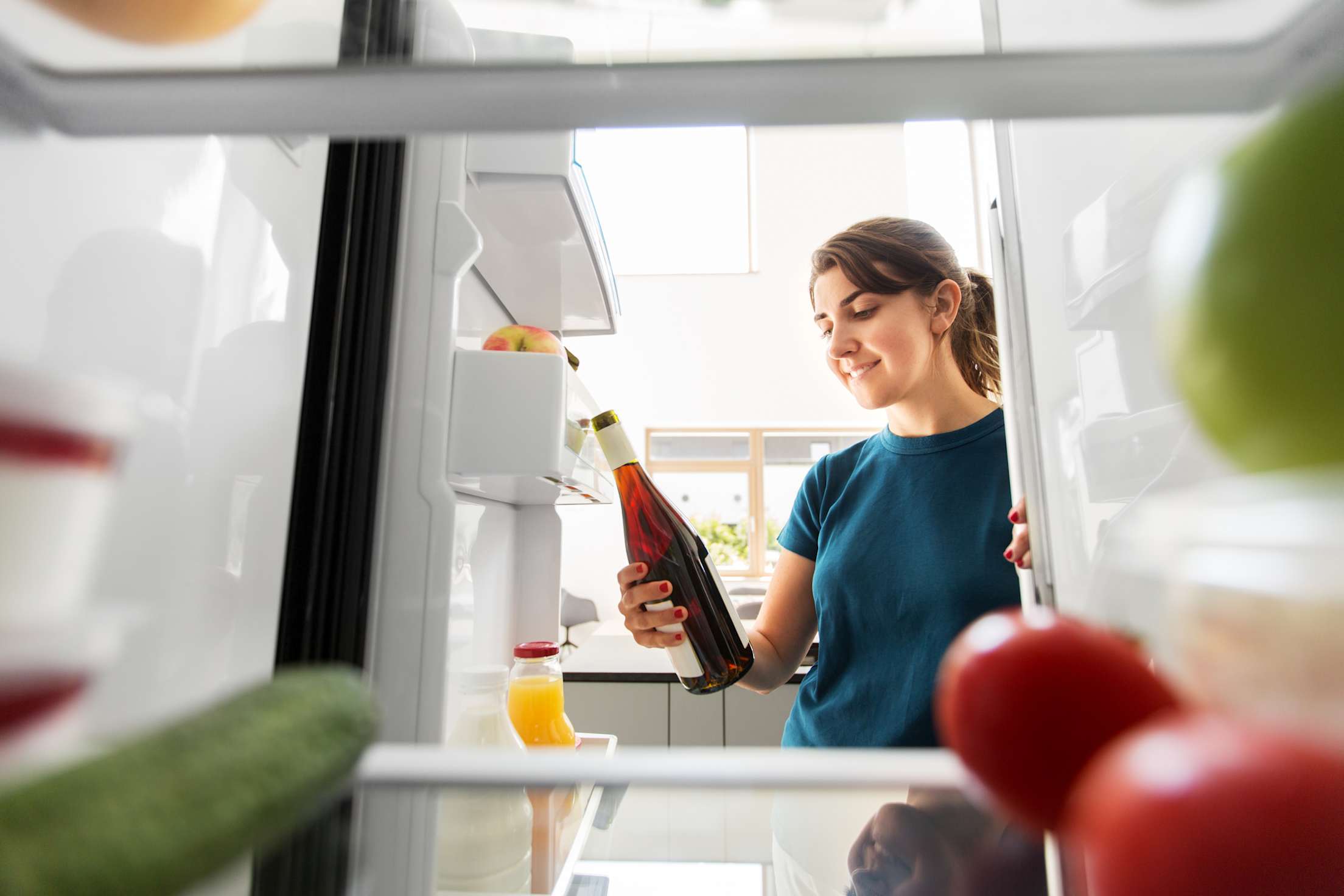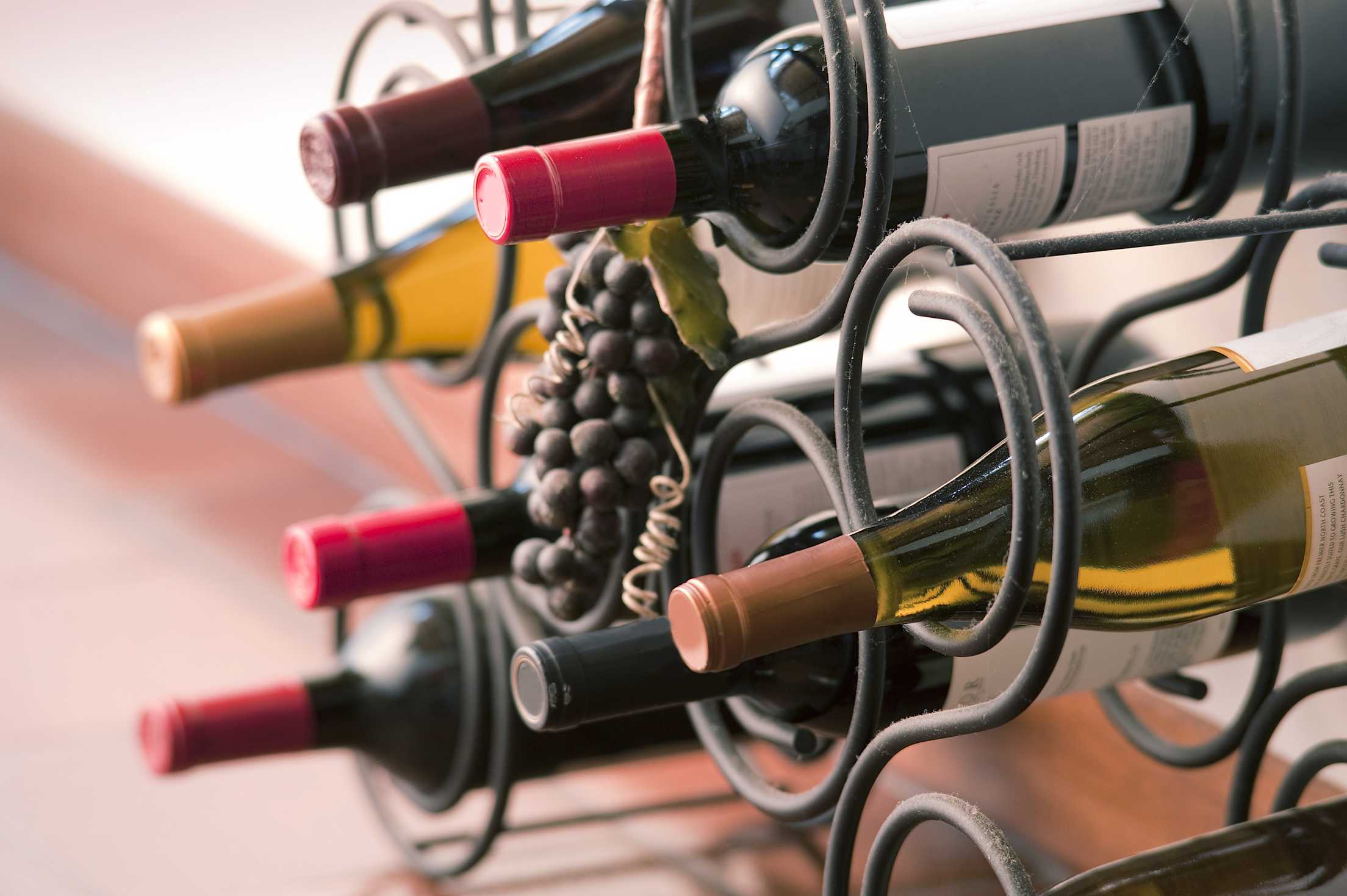
You’ve Been Storing Wine Wrong This Whole Time
Avoid these 8 common mistakes for better tasting, longer lasting wine.

When you like wine, it’s easy to buy a bunch of bottles you’re excited to drink but not sure how to store properly. Before you accidentally ruin your tasty collection, here are some important things to know about how wine ages—and how to keep it in great condition when you set it aside.
Mistake 1: Keeping Bottles for Too Long
“It’s a common misconception that all wines improve with age,” notes wine educator Kevin Zraly, author of Windows on the World Complete Wine Course. “In fact, more than 90 percent of all the wines made in the world are meant to be consumed within one year, and less than 1 percent of the world’s wines are meant to be aged for more than five years.” Depending on its type and quality, a wine may lose up to half of its fruitiness within six months of bottling, and its color may fade (reds) or turn brown (whites) if kept for years.
The few wines that benefit from aging have high levels of acidity and/or tannins (the organic compounds that can affect mouthfeel as well as color in wines). Age-worthy wines can include whites like chardonnay and riesling, and reds like cabernet sauvignon, pinot noir, and syrah. To gauge a specific bottle’s aging potential, ask your wine shop proprietor for advice, search for expert insight online, or reach out to the wine’s producer.
The upshot? It’s OK to focus on enjoying wine rather than saving it for posterity. However, you’ll still want to store it properly—even if just for a little while.
Mistake 2: Using a Space That’s Too Hot
Don’t store your wine in a place where the temperature often fluctuates or becomes very warm, such as on the kitchen counter, on top of the refrigerator, or in the laundry room. Heat is a wine’s worst enemy: Temperatures above 70 degrees will quickly age a wine, robbing it of time to develop its best structure and bouquet. Exposure to high temps for even a few hours may “cook” it, resulting in flat aromas and flavors.
Instead, store your wine in a place where the temperature remains cool. Many professionals aim for an ideal storage temperature of 59 degrees, but Guy Davis, owner of Sonoma County’s Davis Family Vineyards and a winemaker since 1995, says there’s some wiggle room for those new to collecting wine: “If someone has a closet, pantry, cellar, or basement that’s air-conditioned to 70 degrees or less, just like the rest of their home, they can for sure get away with storing their wines that way—as long as they don’t intend to keep them for more than a couple of years.”

Mistake 3: Keeping Wine in the Fridge
Don’t store your wine long-term in your household refrigerator. It’s fine there for a couple of months, but the deep chill in your kitchen fridge—generally 35 to 40 degrees—may cause traditional corks to dry out, allowing air to seep into the bottles, oxidize the wine, and make it go bad faster. Chilling a bottle of wine in the freezer isn’t a great idea either, because the liquid can quickly crystallize and expand, pushing out the cork and creating a mess.
When you need to cool a bottle, chill it in a bucket of water and ice; it’ll be ready to serve within 30 minutes. For long-term storage, consider using a dedicated wine fridge that maintains a temperature of 45 to 65 degrees. Red wines don’t need to be chilled as much as whites, rosés, or sparkling wines, so if you’re mainly into one or the other(s), look for a single-zone cooling fridge. If you prefer to store reds and whites together, look for a dual-zone fridge. Ready to get really serious about wine collecting? You may want to invest in a large, refrigerated maturing cabinet.
Mistake 4: Exposing Bottles to Too Much Moisture (or Not Enough)
Don’t store your wine in very damp or very dry conditions. On the dry end of the spectrum is your household fridge, as mentioned above. In a damp basement or cellar that’s prone to mold, excess moisture can cause labels to peel off and even influence the taste of the wine itself. “Mold or mildew could set in on the edge of a bottle’s cork,” says Patrick Callagy, enologist (a scientist who oversees the production of wine) at the Russian River Valley’s Moshin Vineyards. “As you open the bottle and pour it into a glass or decanter, that wine you’d been excited about could now be tainted with flavors of mold or mildew. Tastes like these are called off-flavors, and they’re never good.”
Store your wine long-term at a humidity level around 75 percent. (Tip: Many home thermometers have humidity sensors; look for an inexpensive one that includes this feature.) If your storage space is too dry, place a pan of water in the area and replenish it every few days. If your storage space is too wet, bring in a small dehumidifier and keep close tabs on any changes; the goal here is to decrease moisture, not to create very dry conditions.
Mistake 5: Letting the Sun Hit Your Stash
Don’t store your wine in any spot that receives more than a few minutes of direct sunlight each day. As with your skin, the sun’s UV rays can prematurely age wine. It’s the main reason winemakers tend to use tinted glass bottles.
Instead, store your wine in a place that’s dark most of the time. For lighting when needed, consider using LED bulbs, which convert more of their energy to light than heat (compared with incandescents).

Mistake 6: Setting the Bottles Upright
When storing wine for more than a year, lay any bottle that’s sealed with a traditional cork on its side so the stopper doesn’t dry out. (This tactic is unnecessary for bottles sealed with a screw cap or a glass or plastic cork.)
Mistake 7: Allowing Smelly Neighbors
Don’t store wine near anything with a strong scent. Even though most bottling methods do a good job of keeping air out, the odors of cleaning solvents, paint, garlic, onions, and other powerfully fragrant items may permeate your wines over time.
Mistake 8: Leaving Bottles Open
Few wines stay fresh for longer than a couple of days after opening. To help prolong flavors and aromas, spray a little inert gas (which displaces oxygen) into a partially consumed bottle and immediately re-seal it with the cork or a stopper. Further protect your already opened wine by storing it in your fridge until you’ve finished the bottle. Cheers!
Outsmart life with AAA Membership.